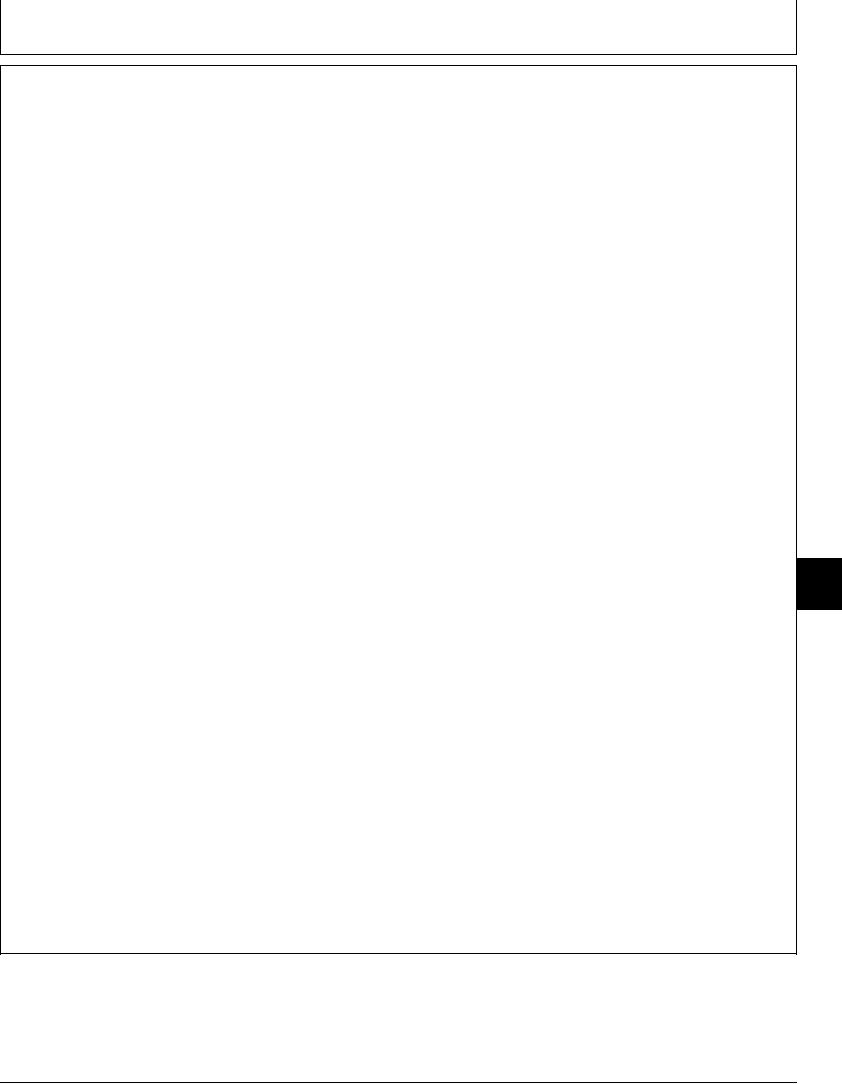
TM 5-3805-280-24-1
Theory of Operation
to control valve return passage. Both check valves will
When the propel valve spools in the main control valve
seat and counterbalance valve will center trapping oil
are in neutral position, counterbalance valve (J) is held
in the motor to prevent rotation. Oil will also flow back
in the center position by springs (B) on both ends of
through the brake passage to the motor housing and
counterbalance valve. Both propel motor oil lines are
the park brake will engage after the propel motor stops
connected to the control valve return passage. Oil in
rotating. At the same time, the shock pressure caused
each motor is trapped by check valves (C and F) and
by the inertia force of the motor stopping is released
counterbalance valve (J) holding the motors stationary.
through the crossover relief valves (D and E). Check
The park brake release circuit is also routed to return
valves (C and F) have a make-up function to prevent
and the brake spring hold the brake on.
cavitation in the motor.
When the propel pilot controller is moved to forward
When traveling down a hill, the weight of the machine
position, supply oil is routed from the propel valves in
may begin to overrun the propel motors. This would
the control valve to bottom work port (G). If propel pilot
cause faster travel than desired and cause cavitation
controller is moved to reverse position, supply oil
at the inlet side of motors. As pressure decreases in
would be routed to top work port (A).
the inlet passage of the motor, the pressure holding
the counterbalance valve also decreases. Spring (B)
In forward direction, supply oil enters bottom work port
force moves the counterbalance valve down thus
(G), flows around counterbalance valve to check valve
restricting return flow from the motor slowing motor
(F). Check valve opens and oil flows into the motor.
rotation. This is called "dynamic braking".
Return oil from the motor is blocked by check valve
During normal operation supply oil from the control
(C) and counterbalance valve (J). This, along with the
valve is routed past the counterbalance valve and
motor's resistance to turning, causes pressure in
check valve to the motor. Supply oil is also routed to
bottom work port (G) to increase. The increasing
the crossover relief valves (D and E). The crossover
pressure is also sensed at the end of counterbalance
relief valves are direct acting relief valves with a
valve through orifice (H). As pressure increases, the
cushion sleeve. Supply oil is sensed on the end of
spool is pushed upward against the spring force. As
9025
poppet of one relief valve. Oil also pushes the sleeve
spool moves up, oil from the motor flows past notches
05
up on the other relief valve to help keep its poppet
in the counterbalance valve to the top work port (A)
83
closed.
and the propel motors start to turn. Supply oil is also
routed to the park brake release circuit (I) to release
During relief operation oil pressure overcomes spring
the park brake. (For park brake release circuit
force pushing the poppet off its seat. Pressure oil is
operation, see Propel Motor Park Brake Release
relieved from the passage that is pressurized to the
Circuit Operation in this group.)
passage that is at return pressure bypassing the
motor.
When the propel pilot controller is returned to neutral
position, the oil in both work ports (A and G) is routed
TX,9025,GG2614 1920MAY982/2
6-79

